Key takeaways:
- Functional programming emphasizes immutability and first-class functions, leading to more predictable and efficient code.
- Scala combines object-oriented and functional programming, allowing for versatile coding and easy integration with Java.
- Learning Scala enhances coding confidence despite initial challenges, particularly with static typing and functional concepts.
- Key projects like Twitter’s tweet processing and Apache Spark showcase Scala’s power in handling large datasets and improving system efficiency.
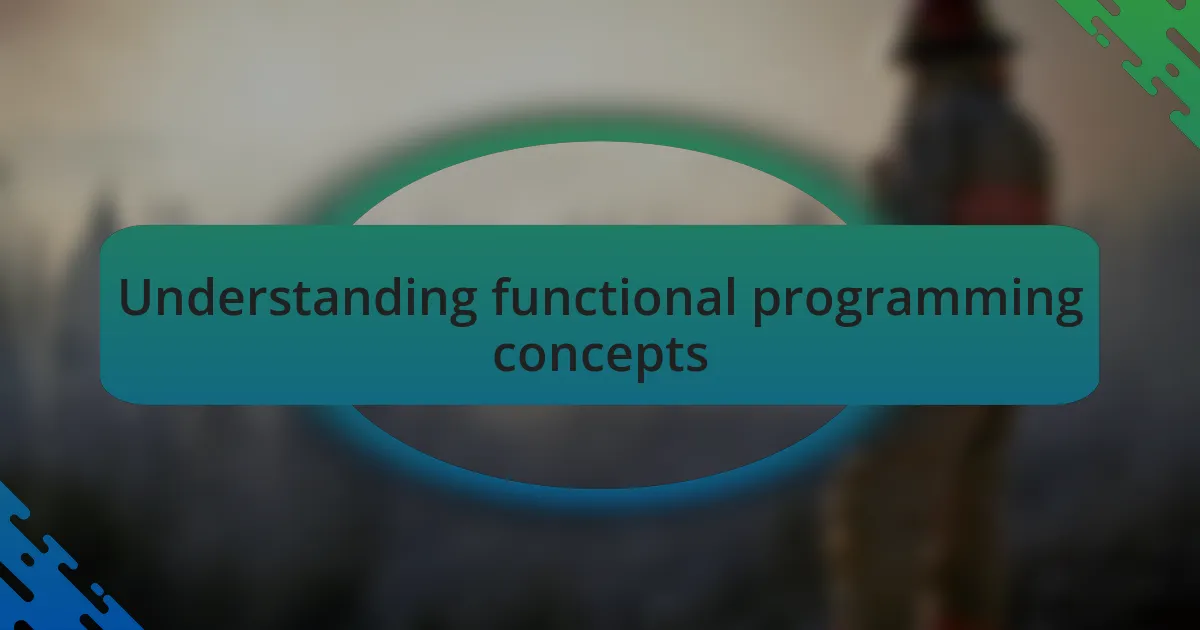
Understanding functional programming concepts
Functional programming is a paradigm that emphasizes immutability and first-class functions. When I first encountered concepts like pure functions and higher-order functions, it felt like a breath of fresh air compared to the more traditional object-oriented approaches I had been used to. I often ask myself, how can such simplicity lead to more efficient and less error-prone code? The answer lies in the way functional programming encourages developers to think about data as a series of transformations, rather than a sequence of changes.
One of the key insights I’ve gained is the importance of immutability. In my early projects, I often grappled with state changes that led to unexpected bugs. This led me to appreciate how functional programming minimizes side effects by ensuring that once a variable is set, it cannot be altered. Isn’t it reassuring to think that this can result in more predictable outcomes?
Moreover, I was intrigued by the concept of first-class functions, which allows functions to be treated like any other variable. This opens a world of possibilities, making code more modular and easier to read. Reflecting on my experiences, I remember how liberating it felt to write more concise and expressive code without the clutter of unnecessary state management. It’s moments like these that made me realize just how powerful functional programming can be.
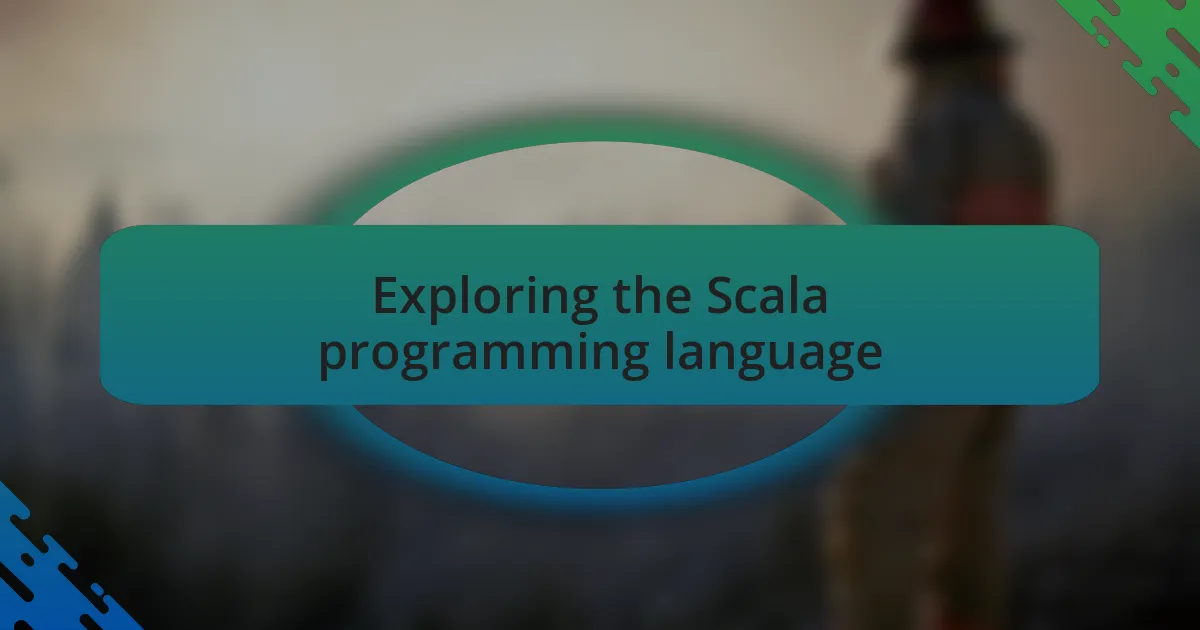
Exploring the Scala programming language
Scala is a fascinating programming language that blends the best of both world—object-oriented and functional programming. I remember the excitement I felt diving into the syntax, which felt both familiar and refreshingly new. The ability to seamlessly mix immutable and mutable data structures allowed me to tackle problems in diverse ways, often making me wonder, how can one language offer such versatility?
One aspect of Scala that really stands out to me is its compatibility with Java. When I first started exploring Scala, I realized how easy it was to integrate it with existing Java codebases. This was a game-changer for me because it meant I could gradually introduce functional programming into projects without the fear of a complete overhaul. I often think back to the satisfaction of refactoring Java code into more concise Scala expressions. It’s like discovering a hidden treasure in a well-known landscape.
Moreover, Scala’s expressive nature fundamentally changed my approach to coding. I distinctly recall working on a data processing project where the conciseness of Scala’s collections API allowed me to express complex operations in just a few lines of code. It made me wonder why I ever settled for more verbose languages before. Each time I run into a tricky algorithm, Scala’s functional features invite me to revisit problems with a fresh perspective, proving that exploring its depths can lead to unparalleled solutions.
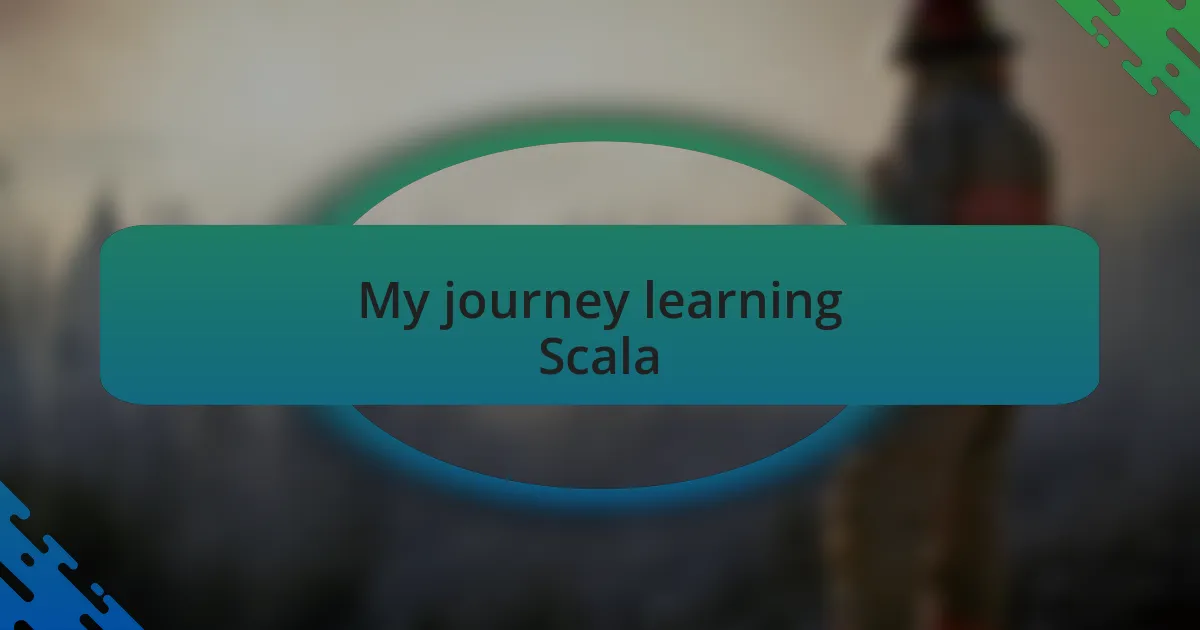
My journey learning Scala
As I embarked on my journey to learn Scala, I felt a mix of anticipation and trepidation. Initially, the static typing system felt like a challenge, but with time, I discovered that it actually enhanced my coding confidence. I vividly remember a moment when I solved a particularly perplexing type error, and the sense of achievement was electrifying—like unlocking a new level in a game.
One of the turning points in my Scala learning experience was participating in a local coding meetup focused on functional programming. Delving into topics like higher-order functions and pattern matching felt like peeling back layers of an onion, revealing deeper insights with each discussion. I chuckle now when I think about my first attempt at using a higher-order function—it was clumsy, but it sparked a deep interest in exploring the functional paradigm further.
Working on a personal side project helped solidify my Scala knowledge. I implemented a small web application, and every time I leveraged Scala’s powerful implicit conversions, I felt a rush of exhilaration. Those moments made me appreciate how functional programming can make code not only elegant but also enjoyable to write. Reflecting on that experience, I can’t help but ask—how could I have overlooked such a powerful toolset for so long?
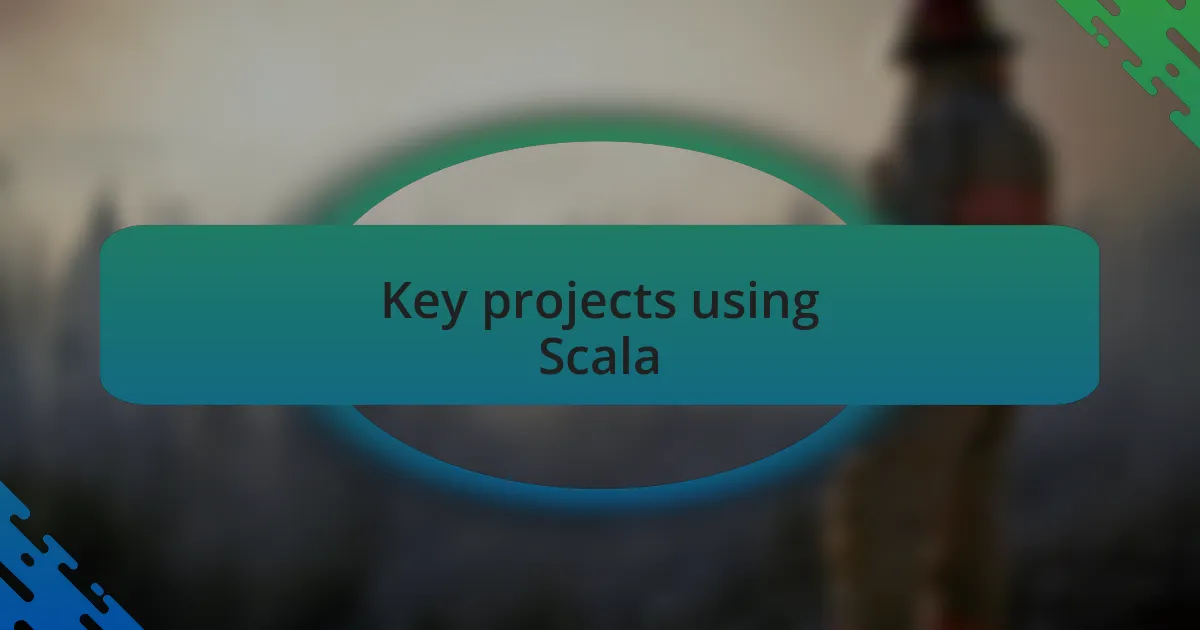
Key projects using Scala
When I think of key projects using Scala, one that stands out is Twitter’s tweet processing system. Their use of Scala allows them to handle an enormous volume of data efficiently, while also leveraging the functional programming paradigm to build robust systems. Watching how they used features like pattern matching to parse tweets in real-time was a real eye-opener for me; it showcased the raw power of Scala in high-stakes environments.
Another notable project is LinkedIn’s use of Scala for its back-end services. They adopted Scala to improve their microservices architecture, which has benefited from the language’s concurrency model. It’s fascinating to see how they manage to scale their services so effectively, and I often wonder how different my own projects could be if I harnessed similar practices in my Scala development.
Finally, I can’t forget about Apache Spark, which was a game-changer in data processing. By using Scala for Spark, developers can write concise and expressive code that processes large datasets in parallel. I remember the first time I ran a large-scale data analysis with Spark—it felt like I had tapped into a powerful engine that could handle more data than I ever imagined. Isn’t it amazing how a language can open up such vast possibilities?
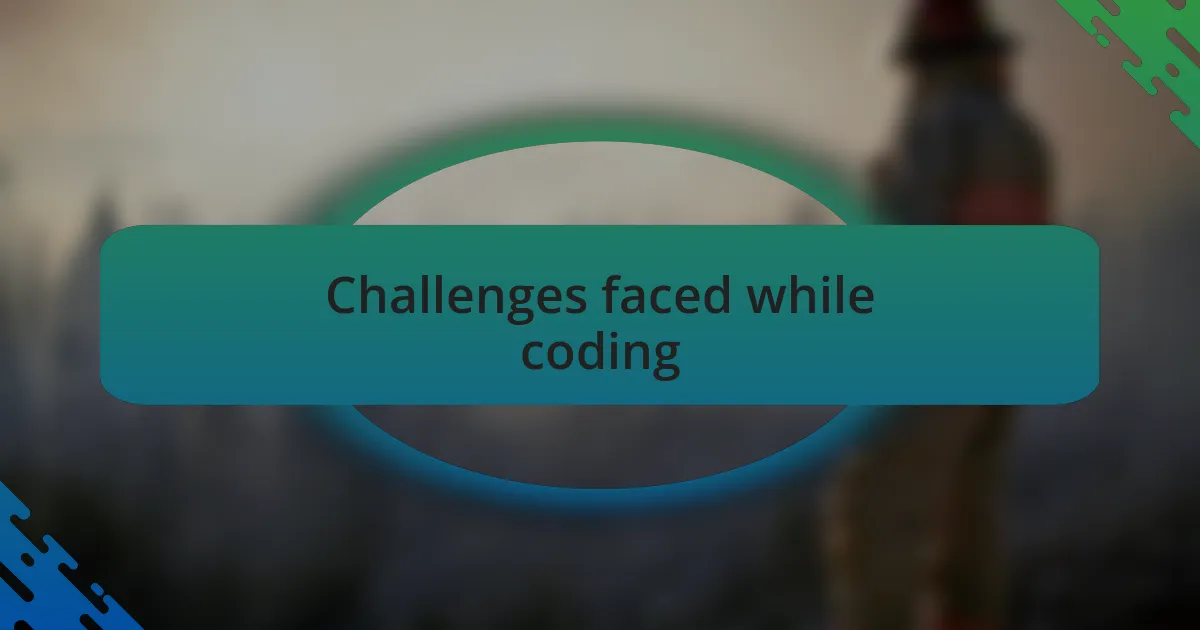
Challenges faced while coding
Coding in Scala, especially within the context of functional programming, presents its own unique set of challenges. One of the most significant hurdles I’ve encountered is the initial learning curve associated with its syntax and paradigms. I remember feeling overwhelmed when trying to grasp immutability concepts and higher-order functions—there were moments where I questioned whether I was cut out for functional programming at all.
Debugging code also can become quite tricky since the functional approach encourages a different mindset. For example, as I began to embrace pure functions and avoided mutable state, I sometimes found myself lost in the complexities of tracing state changes. These instances made me appreciate how crucial it is to cultivate a strong understanding of the functional programming principles to effectively debug my code without getting frustrated.
Moreover, collaborating with teams that had varying levels of experience in functional programming added another layer of complexity. There were times when I felt like a lone champion for functional practices, trying to convey the benefits of Scala while encountering resistance to change from colleagues. It was challenging to bridge the gap between different coding styles, but I realized that open dialogue and patience were key in helping everyone to work toward a common goal. How have you navigated similar situations in team projects?